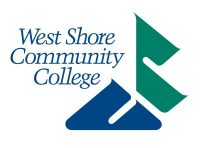Loans
After completing the FAFSA, you may be offered loans as part of your institutions financial aid offer. Remember, a loan is money you borrow and must pay back with interest.
If you make the decision to take out a loan, you will want to fully understand who is making the loan and the terms and conditions. Student loans can come from the federal government, private sources (i.e. banks) or various organizations. Loans by the federal government often provide more benefits than private loans.
DIRECT LOANS OFFER:
- Low Fixed interest rates
- Flexible repayment plans based on income
- Cancellation, discharge and forgiveness of loans under certain circumstances
- Postponement options of loan payments if student returns to school or experiences an economic hardship
STEPS TO RECEIVE DIRECT LOANS
Determine Eligibility
To qualify, you must be enrolled at least part-time as the institution that participates in the Direct Loan Program. You must also meet general eligibility requirements for the federal student aid programs. Visit StudentAid.gov/eligibility for more information.
Complete the FAFSA
To apply for Direct Loans, you will need to complete the Free Application for Federal Student Aid (FAFSA) form every year you attend college. For more FAFSA information, please visit our FAFSA tab.
Review Financial Aid Offers
The institutions you list on your FAFSA form (and you have been accepted to) will send a financial aid offer that includes the types and amounts of financial aid you are eligible to receive. You will be prompted to accept or decline offered aid.
*We strongly encourage students to accept all FREE money first (scholarships, grants), then earned money (work study), and then borrowed money (Direct Loans).
Complete Master Promissory Note and Entrance Counseling
Before you can receive a Direct Loan, you must sign a loan agreement called Master Promissory Note (MPN). If you are a first time borrower, you will also need to undergo entrance counseling. Both the MPN and entrance counseling can be completed at StudentAid.gov
BEFORE RECEIVING A LOAN, CONSIDER…
How Much To Borrow
Determine how much money you will need to borrow to cover education expenses for each year you’re attending. Review the institution’s cost of attendance on the financial aid letter.
Additional Factors:
- Location of institution (cost of living varies from place to place)
- Price of institution of choice (more expensive the school, more likely you have to borrow)
- Amount of financial aid your institution can offer from its funds (scholarships, and grants)
- Expected graduation date and future borrowing needs to get you through graduation (estimate your total borrowing needs by multiplying the amount borrowing for one year by the length of your program)
TIPS ON MANAGING YOUR STUDENT LOANS
- Track your Borrowing
View your account at StudentAid.gov/login. If you have private loans, they will not be listed. - Pay Interest as Accumulates
Pay interest on your Direct Loans while you are in school or during grace periods, whenever possible. This will help avoid capitalization of any unpaid interest. - Communicate with Loan Provider
- Change of address or phone number
- Change of name (by marriage)
- Any change in status that could affect your loan
What Is "College"?
College is all post-secondary education including certificate programs, trade schools, community colleges and 4 year colleges and universities. Learn More





















